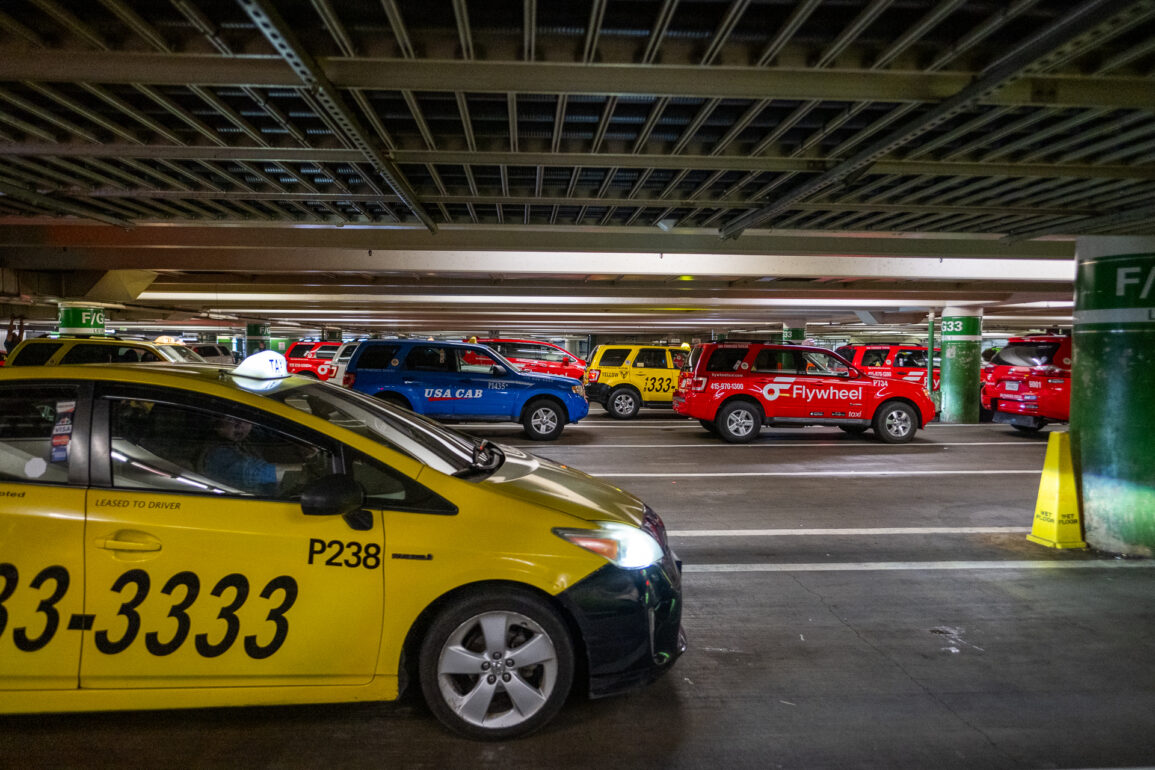At the time, around 700 taxi drivers bought the medallions at $250,000 a piece, bringing in millions of dollars for the city. At first, the investment paid off for many drivers, who could make back the money and even lease out their medallion to other cab drivers to retire.
“It used to be that you work hard, you help serve the city, and then you’re rewarded. And back then, we were making money because there were no other apps around us,” said Asghar, originally from Pakistan. “The city said if it did not work out, [they’d] we’ll buy back the medallion.”
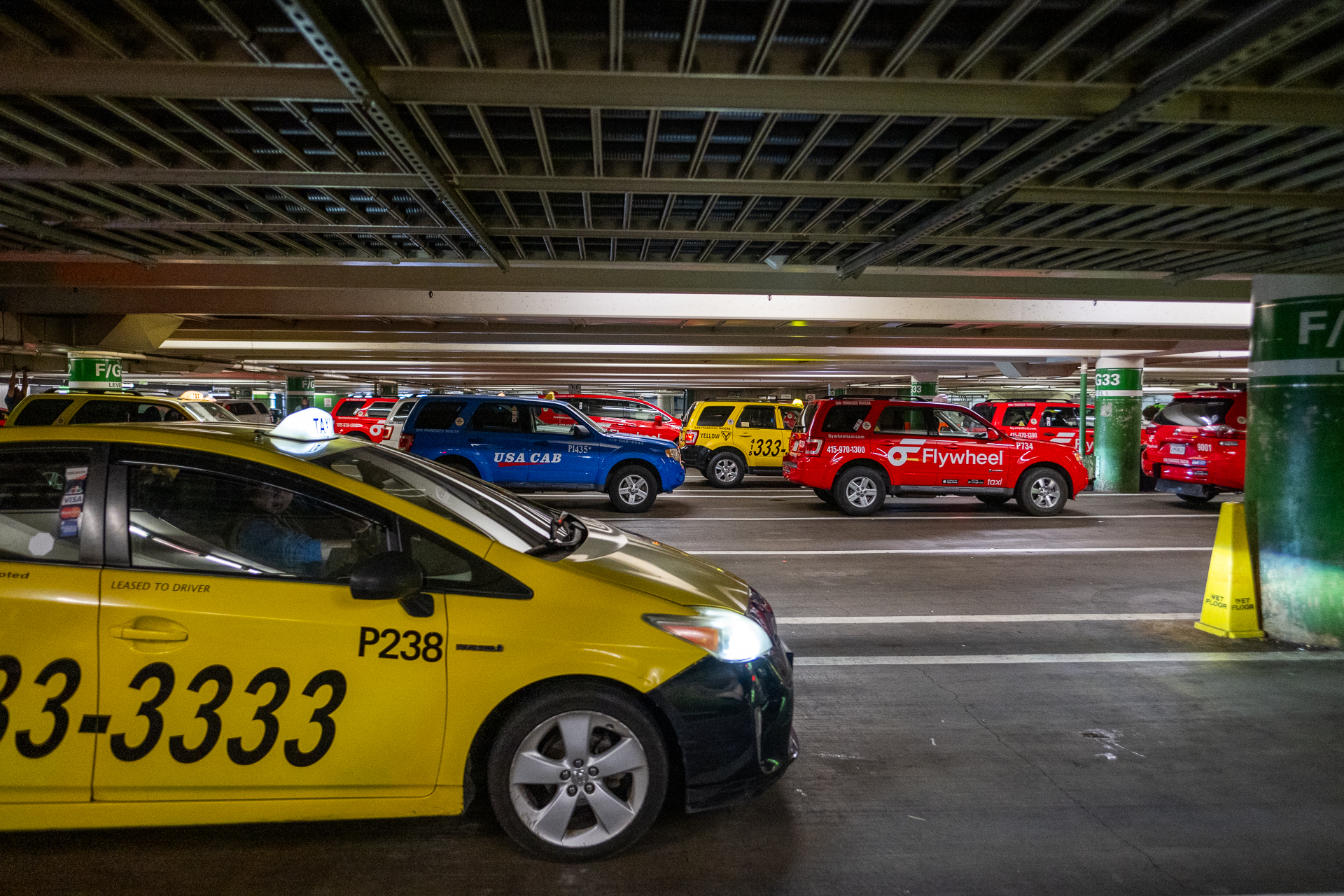
Before ride-hailing apps Uber and Lyft began offering cheaper ride options without being required by the city to purchase a medallion to operate, Asghar said he could get dozens of cab rides in a day.
Then, in 2018, the San Francisco Federal Credit Union sued the city, alleging that it broke its contract by failing to maintain a viable market for medallions.
Meanwhile, many Bay Area taxi drivers have defaulted on their medallion mortgages, and those who have not, struggle to stay afloat.
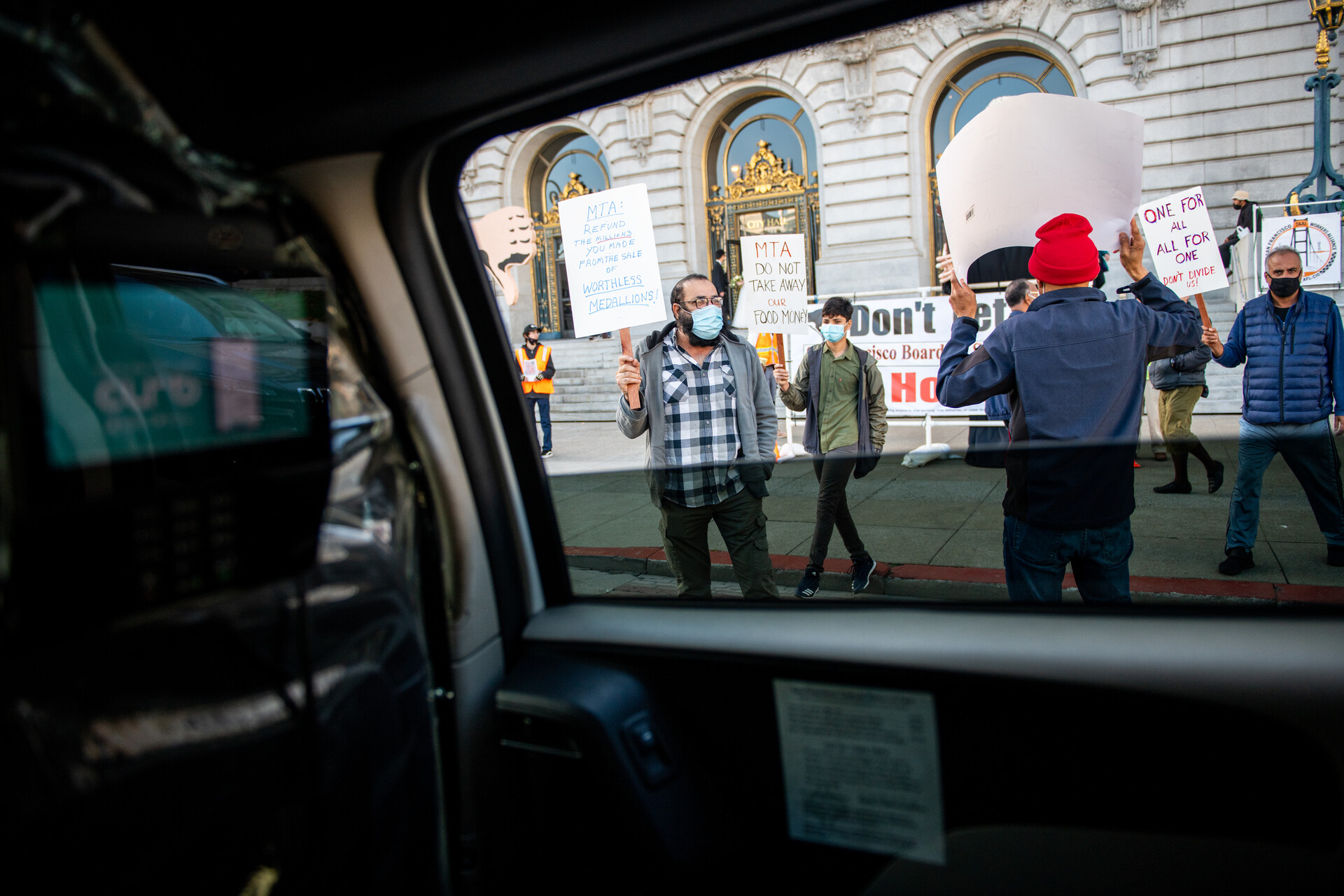
“Slowly, we lost our business. I didn’t know what to do. I have five kids, me and my wife,” Asghar said. “Since these apps came, and now that driverless apps are here, who’s going to help us?”
The city transit agency and the SF Credit Union are still in negotiations over loan forgiveness programs to this day.
“SFMTA is still considering all of its options in the course of the ongoing mediation with SFFCU and is not considering an approach outside of the mediation context at this time,” said Stephen Chun, a spokesperson for SFMTA, in an email.
When asked why San Francisco hasn’t been able to follow other cities in lowering medallion debt, Chun wrote that there are “differences in the medallion market and lending environment between SF and NY that make it difficult to develop a similar program.”
Asghar can’t simply switch over to Lyft or Uber or another competitor. He’s saddled with a $1,777 monthly loan payment to pay off the medallion, along with a $900 monthly fee to pay for the FlyWheel logo on his cab.
He estimates paying off the medallion will now take about 12 years if the rates of ridership don’t drop even further, as opposed to not having any mortgage for the permit before, and that’s only if he sticks with his 14-hours/day, six-days/week work schedule.
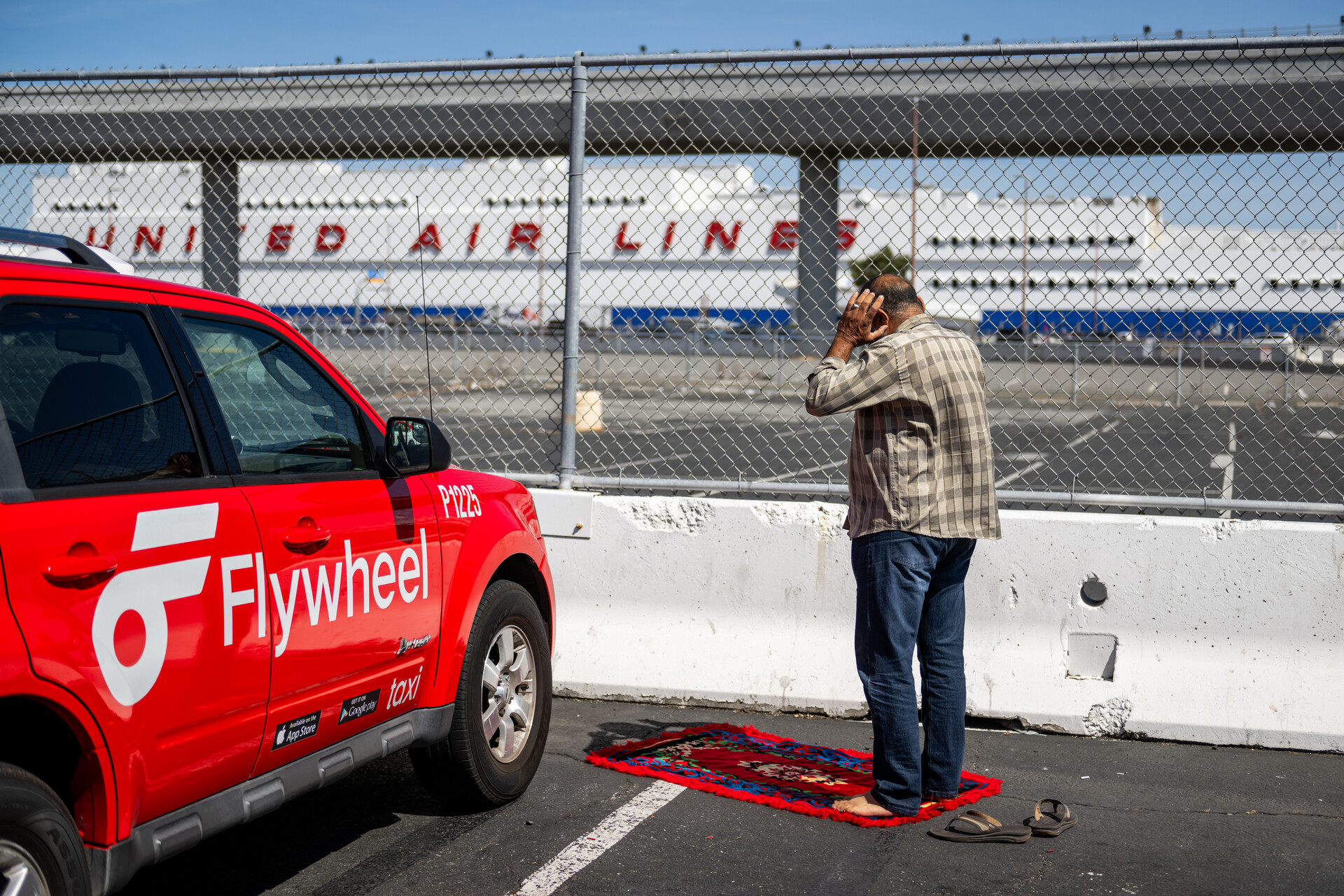
As drivers continue to work to pay off their debt, the value of these once-coveted medallions has plummeted.
There were 848 medallions renewed for the 2023-24 fiscal year, compared with 1,329 in 2019-20, according to data from San Francisco Municipal Transportation Authority.
But no new medallion has been purchased in San Francisco since 2016.
Since 2019, the number of actual taxi drivers in San Francisco has dropped about 25%.
Any dreams Asghar had of passing down the medallion to his son have been ditched. Asghar, who has driven taxis in the Bay Area for 20 years, said he no longer sees a future for any of his five children in the industry.


Ihsan, Asghar’s 18-year-old son, works as an Amazon delivery driver at night when he’s not taking college classes. He’s working towards becoming a neurosonographer. But he also shares dreams with his father to spend more time together as a family.
“Nobody should have to work that much just to provide for your family. My dad used to take me on rides when I was younger, but I see how it is now. The medallion is over your head, so you can’t enjoy all these things,” said Ihsan. “If they just got some relief, we could spend more time together and make plans as a family.”
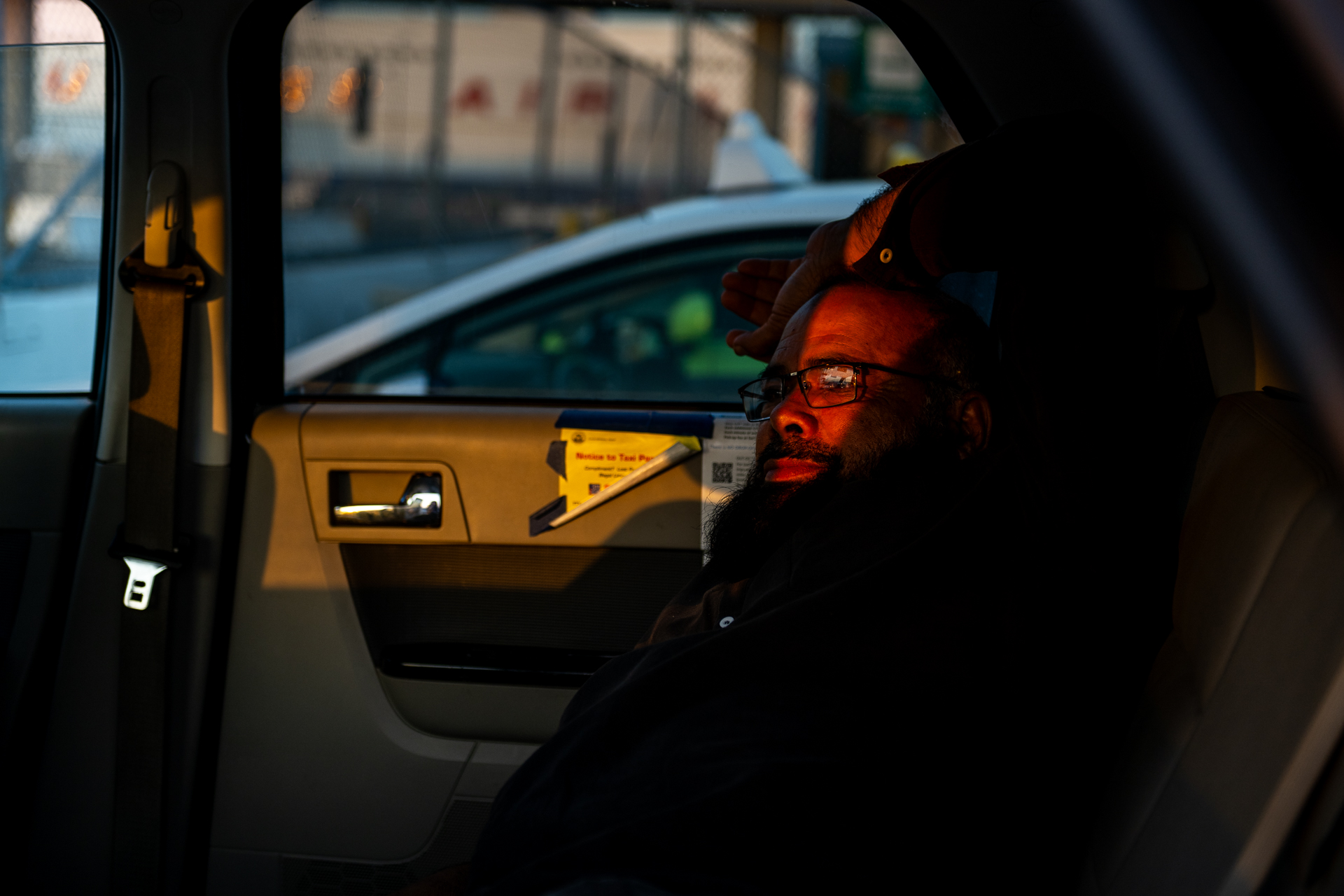
Today, San Francisco is the world’s testing ground for driverless taxis, which have already seen their share of ups and downs.
Asghar was actually working, he said, when he witnessed a high-profile driverless vehicle accident recently in San Francisco, where a pedestrian was hit by a regular car and thrown in front of a Cruise robotaxi, which then dragged the victim several feet forward in the street.
It was the type of scenario that members of the San Francisco Taxi Workers Alliance were calling attention to during a protest this summer outside the headquarters of the California Public Utilities Commission. In June, CPUC voted to allow Cruise and Waymo to add as many driverless taxis in the city as they want.
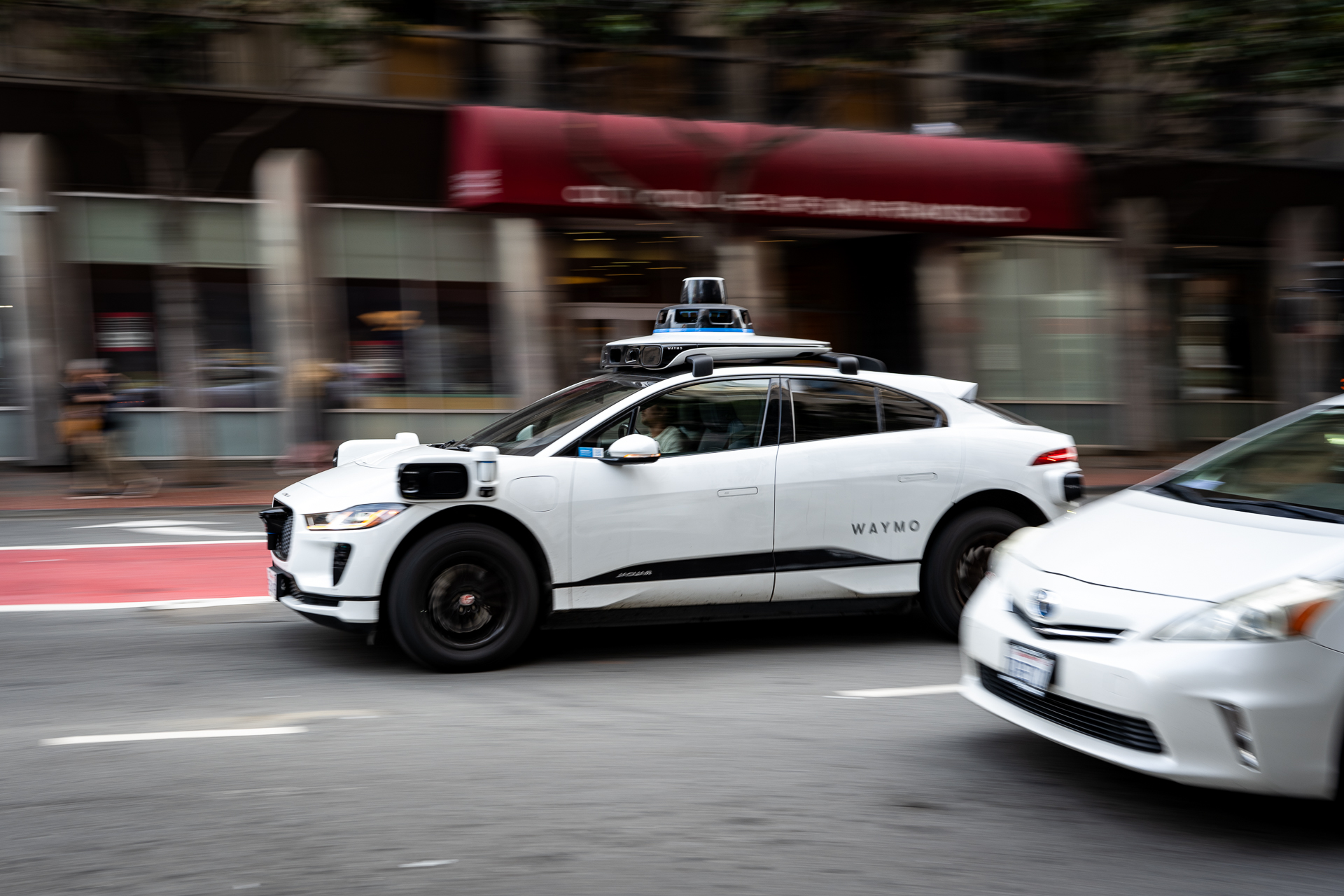
Since the accident, the California DMV and CPUC have called on Cruise to suspend its robotaxi service, and the company has temporarily pulled all of its vehicles off the road nationwide.
But other autonomous vehicle companies, like Waymo and Zoox, have kept their fleets running in San Francisco.
San Francisco has not yet agreed to permit robotaxi company Waymo to operate out of San Francisco International Airport, where Ali typically works. But conversations about airport access are underway between the company and city officials, and Waymo has already started doing pickups and dropoffs from the airport in Phoenix, Arizona.
This post was originally published on this site be sure to check out more of their content.



